Audience Response Should Be More Social

Traditional Audience Response Systems
Audience response has been around for ages. “Raise your hand,” is an old form of taking a poll. People have been clapping to show approval and booing to show disapproval since Roman times.
More recently, audience response clickers have been introduced to conferences and lecture classrooms. They’re usually placed at each seat and attendees can make a selection of A-F to respond to a question proposed by the speaker.
But all these methods lack something essential. They lack the human element. As Aristotle said, “Humans are by nature social creatures.” Luckily recent advances in technology make a more personalized social audience response system (ARS) a reality for conference organizers.
Artistotle says: “Humans are by nature social creatures.” Shouldn’t audience response be social too? Click to Tweet
How Mobile Technology has Revolutionized Audience Response at Events
Technology has pushed the boundary one step further. Nearly every attendee comes prepared with a device in hand (their phone, laptop, or tablet), and better WiFi at venues lets them interact with speakers like never before.
Plenty of apps and software platforms have popped up in recent years that allow speakers to poll audiences. There are others too that allow organizers to get a feel for the “pulse” of their conference. Essentially attendees can anonymously say whether they like or dislike certain topics, sessions, or events.
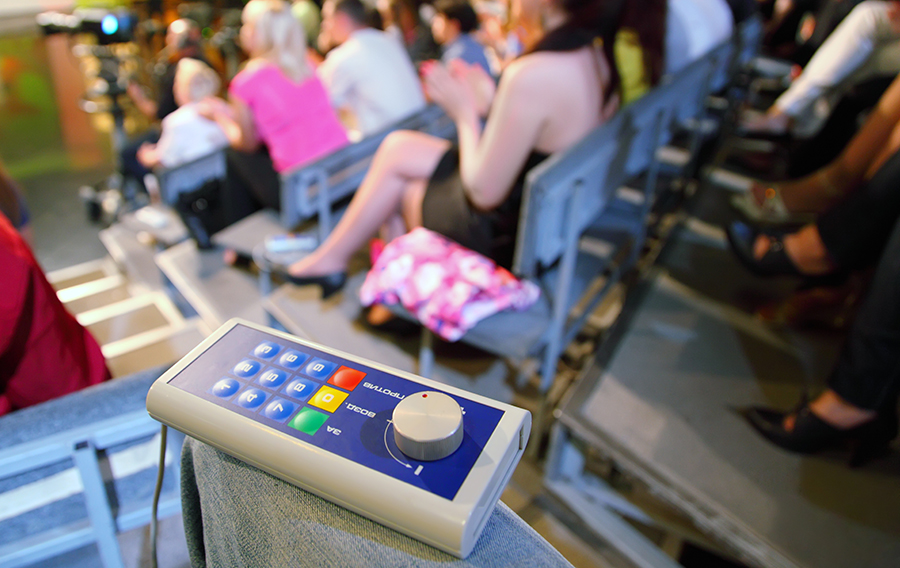
The problem, still, is the missing human element. Attendees want to collaborate and share their knowledge with each other. It’s fun to see anonymous poll results or catch a glimpse of the audience’s feelings in the moment, but without fulfilling the simple desire for attendees to connect, it’s all just a gimmick. Without context, engagement, and active learning, attendees will not feel that the poll contributed to their experience in a meaningful way.
For more on active learning techniques, check out Jeff Hurt’s article, Stomaching Long Conference Lectures Is Out! Active Attendee Participation Is In!
What’s the difference between Traditional Audience Response Systems and a Social ARS?
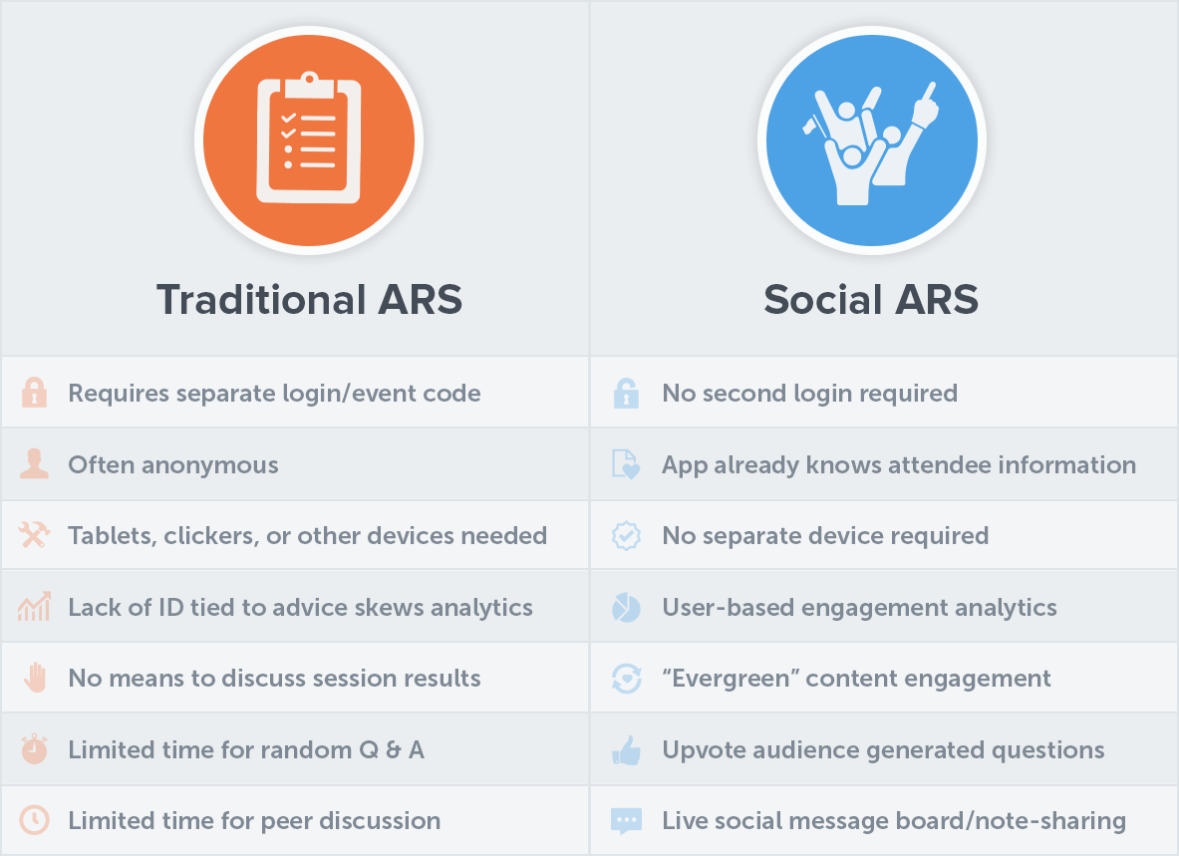
When organizers pair an audience response system with their event app, everyone wins! Speakers get better insights, organizers get better engagement, and attendees have a better educational experience.
Traditional ARS vs. Social ARS
Pairing audience response with your event app provides a lot of great advantages. Let’s compare traditional audience response systems with a social, app-based ARS.
Traditional ARS
- Requires separate login/event code (if available)
- Often anonymous
- Tablets, clickers, or other devices must be provided
- Lack of ID tied to device skews analytics
- Attendees have no means to discuss results in context of session
- Limited time for random Q & A
- Limited time for peer discussion
Social ARS
- No second login required
- App already knows attendee information
- No separate device required
- Accurate attrition and user-based engagement analytics
- “Evergreen” content engagement
- Audience generated questions that are upvoted for relevance
- Prolonged time for discussion via in-session social message board/note-sharing
Why a Social ARS Saves Meeting Planners Money
At this point you’re probably thinking, “Oh no! New technology is always expensive.” But the beauty of this new kind of audience response is that it’s built in to the tools you’re probably already using. Have an event app? (If you don’t, you should). A social audience response is built in.
The truth is, traditional ARS costs can add up. Supplying clickers or devices can be expensive if you overstock and embarrassing when you understock. Attendees may accidentally walk away with devices too.
Since a social ARS is integrated with the event app attendees are already using, it empowers attendees to use their own devices with their own unique login information. This increases the comfort level of attendees and is more budget-friendly for organizations.
Okay, now that you know the differences between traditional audience response and a social ARS, let’s look at what the future of audience response looks like…
Why Audience Response Should Be More Social
There’s a lot of talk about how speakers should take the roll of facilitator rather than lecturer at conferences. Attendees are already experts in their fields. They come together to share research and discuss new ideas.
Because of this, better interaction between speakers and attendees is important. Attendee polls should be meaningful. They should be the starting point for discussion, not a gimmick.
If humans are naturally creatures with social habits, then engagement by nature is also social. For that reason alone, audience response should have social features built in. So, what does a social audience response system look like?
Attendees are experts too… facilitate an environment for them to share ideas at your events. Click to Tweet
A social ARS facilitates attendee engagement…
Traditional ARS could only collect anonymous attendee answers. The speaker asked a question, the audience picked an answer, the results were shown, and the speaker said, “As I expected!” or “Huh, not the typcial answer.” Then the presentation just moved along.
A social ARS however collects the results and then lets attendees engage with each other and the presenter. They can either ask speakers questions by raising their hands, or by typing a question into the ARS directly. When they type a question into the ARS, other attendees can upvote those questions so the most relevant questions get answered first.
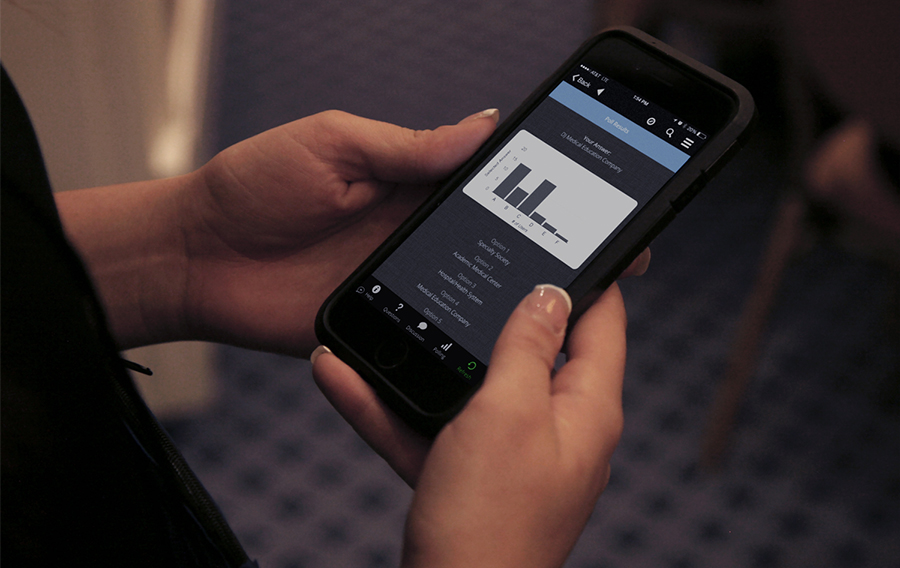
Attendees may also comment on the results or on the content that’s being presented. This not only allows attendees to engage more with the content, but also to shape the flow of the content being presented.
It also makes session content more “evergreen.” Attendees can log into the app months after and continue to engage with other attendees about the session’s topic, kind of like a dedicated social network or forum for just that session.
A social ARS gives introverted attendees a voice…
Susan Cain wrote a book called Quiet: The Power of Introverts in a World That Can’t Stop Talking, for which she also gave this Ted Talk:
It is often difficult for introverts to find value in the conferences they attend. They are not natural networkers, they take in a lot of information but find it difficult to share their own insights, and they are shy.
Pairing technology with live interaction can be a powerful tool for these individuals. Whereas raising a hand may feel daunting, typing a comment or question on an app can be freeing.
A social ARS allows conference organizers to crowdsource content…
Meeting planners are always looking for more ways to create content. Content is the meat and bones of our events after all.
With a social ARS, attendees can opt in to share the notes they’re taking on presentation slides. This is an essential part of continuous education, which is all about knowing where to find the right information at the right time by tapping into your network.
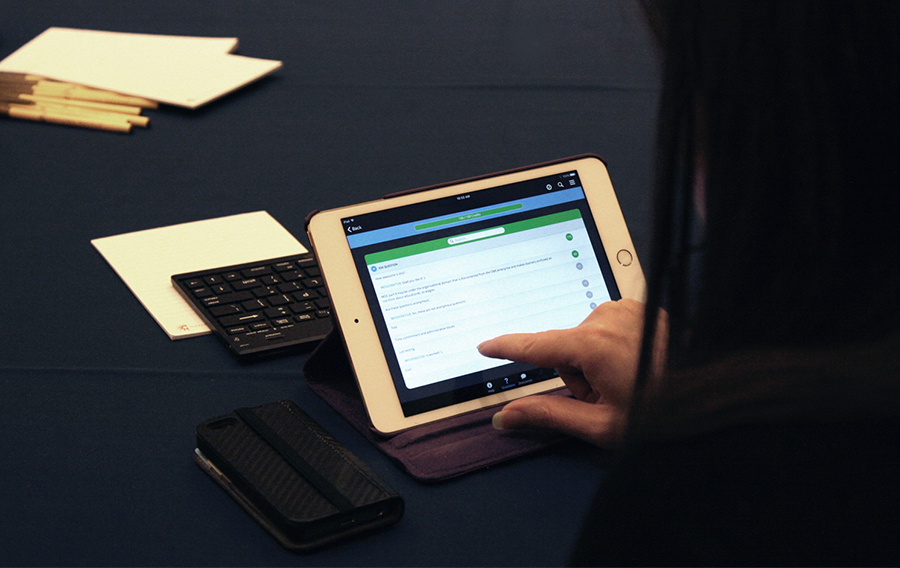
How many times has someone annoyingly turned to you and said, “Hey, what did the speaker just say?” How many times have you been the one not paying attention and dare not ask that same question to avoid looking stupid?
A social ARS is a simple solution. If you and your peers are sharing your presentation notes in an app, you’d simply scan through what others are saying about the topic and see if there’s something useful or relevant for you.
Upvoting questions is another way to do this. Many attendees have similar questions for speakers and facilitators. If they rally behind a particular question, it’s more likely they will receive an answer.
A social ARS provides speakers and event managers with useful data…
Traditional audience response is completely anonymous. An attendee simply clapped to show approval, or pushed a button on a device without a reliable way to indicate who pushed that button.
A social ARS however is built into the app environment (native or HTML based) that attendees are already using to access conference content and information. That means the same profile they use to access content is used to ask questions, comment on topics, and participate in surveys.
This gives organizers the unique opportunity to understand not only what attendees are saying but also who is saying it. Speakers can also get a better feel of who is attending their sessions and interact with those people on a much more personalized basis.
A social ARS allows attendees to connect…
Because a social audience response system is built into a user environment that your attendees are already signed into, it also allows for greater networking opportunities. Even if attendees are sitting across the room from each other but like the types of questions or comments another attendee is posting, they can find that person’s profile in the app and connect further.
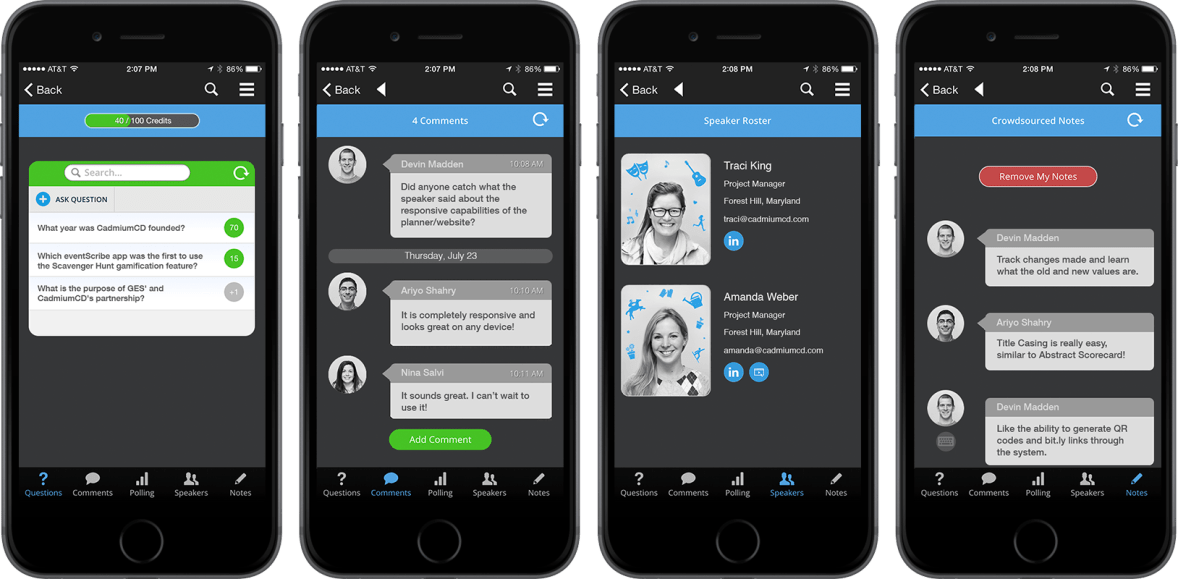
They can add them as a contact, send and in-app message, or find their social media profiles. They can also connect with speakers who choose to share their contact information in a similar way.
This truly adds a collaborative community element that’s never before been seen in audience response. It can make a big lecture hall feel like a small discussion, and bring people together that may have never had the chance to connect otherwise.
In Conclusion
Technology is a wonderful thing. But the way traditional audience response works is lacking. Sharing poll results then moving on does nothing to facilitate learner engagement among attendees.
Bringing social elements into audience response is a crucial component to moving ARS forward. With speakers moving toward the roll as facilitator, and with attendees more willingly sharing their expertise with peers, adding social functionality to ARS technology will help foster engagement and interaction among these groups.
Watch the video below to see how a social ARS works. Skip to the 2:00 minute mark to hear what people had to say about it:
